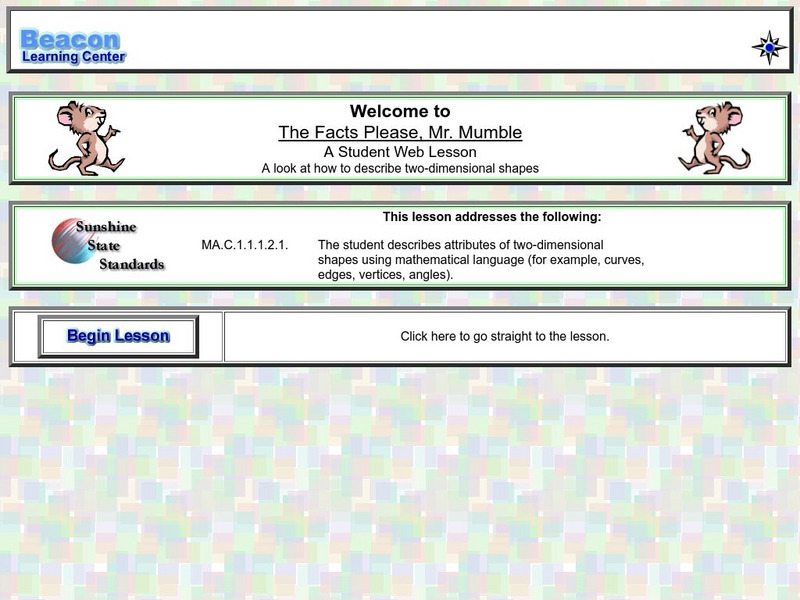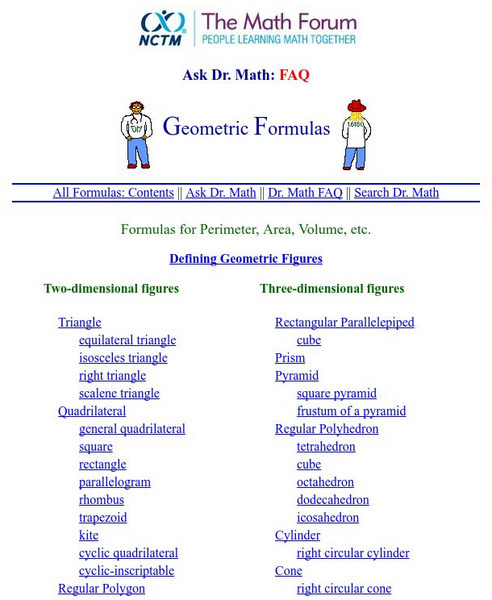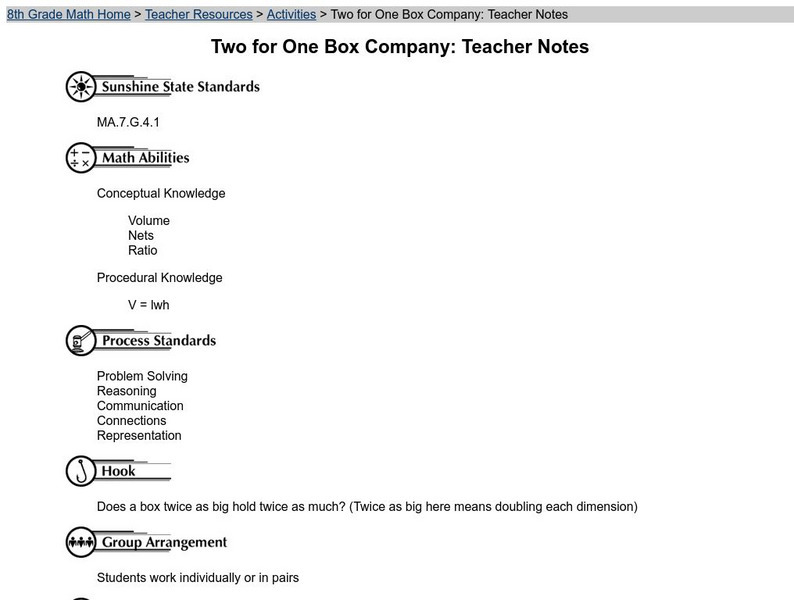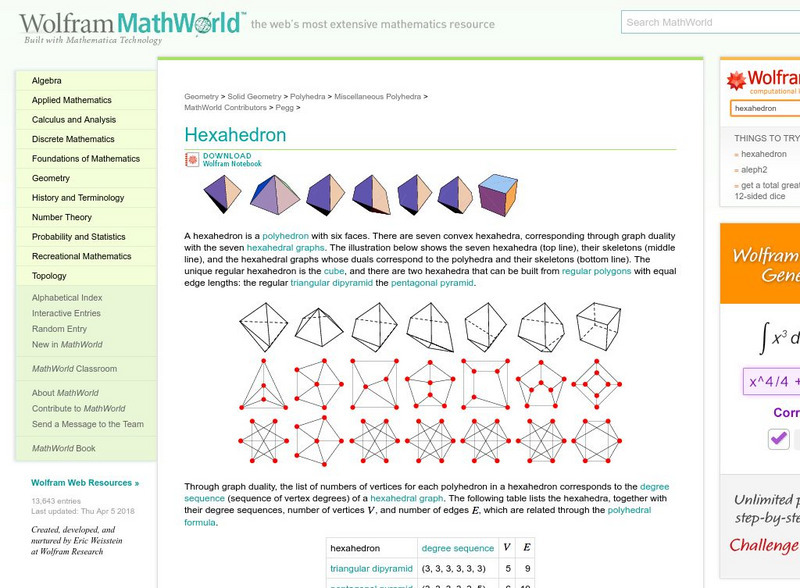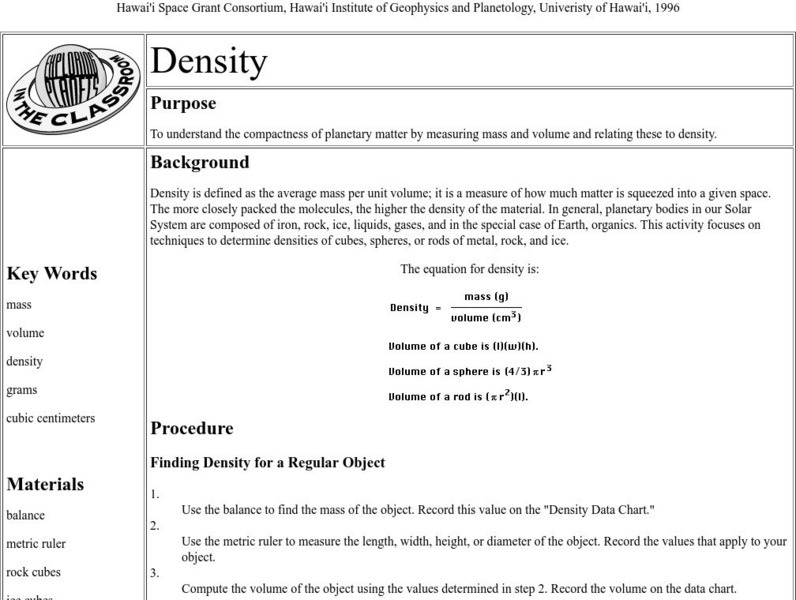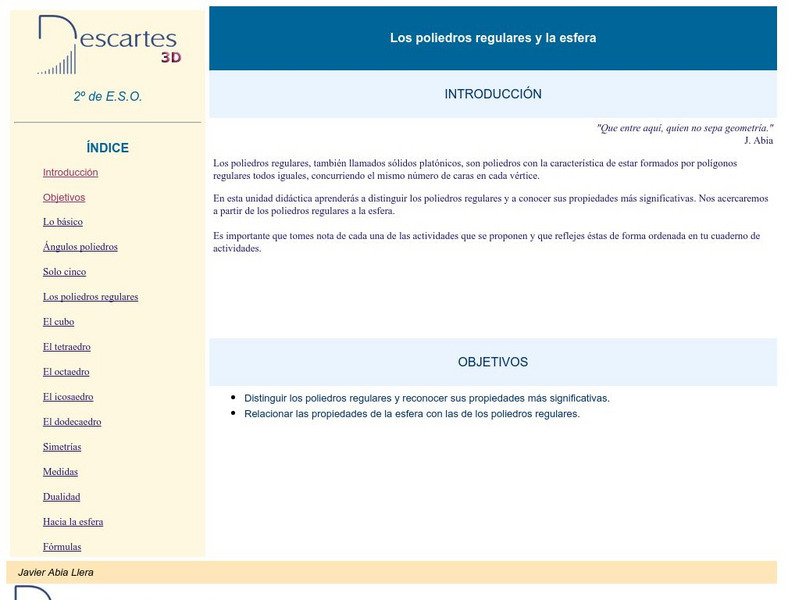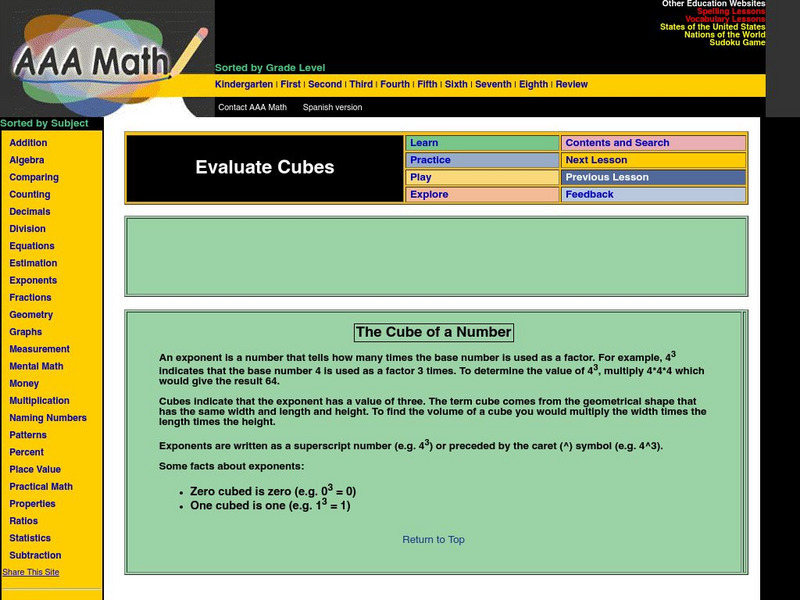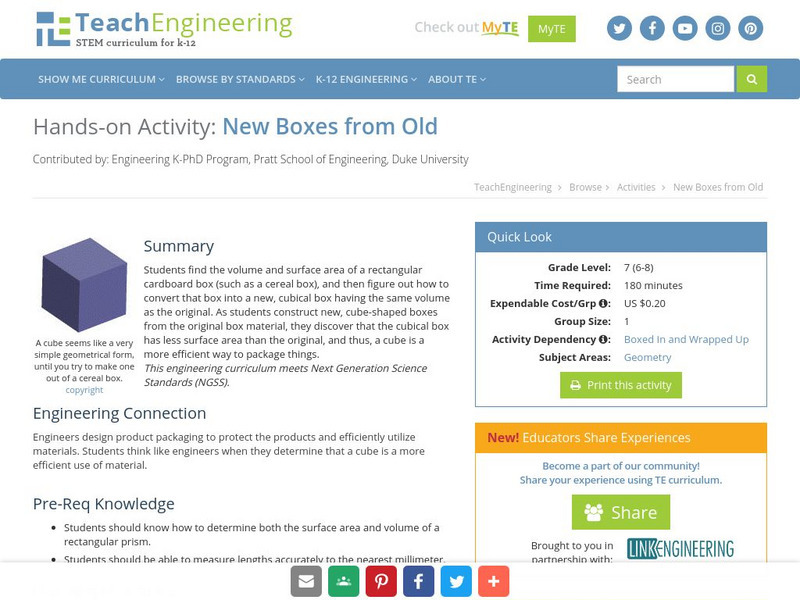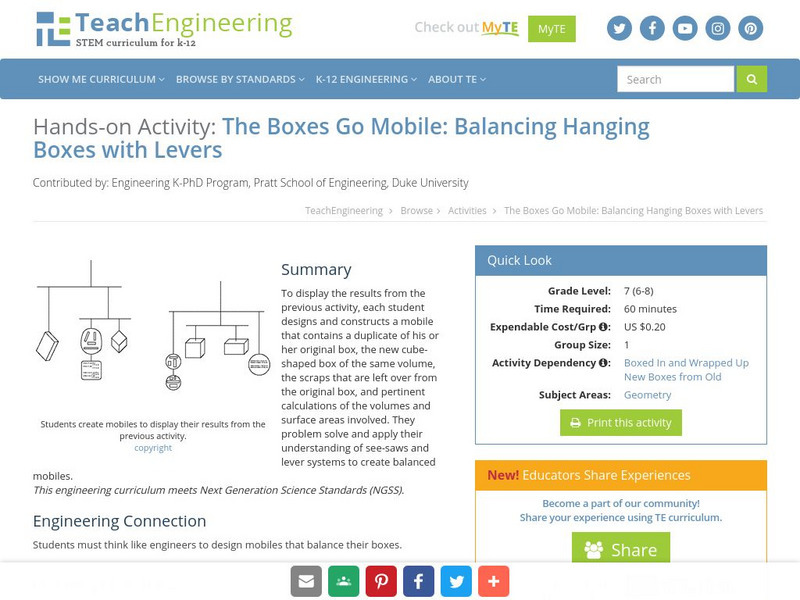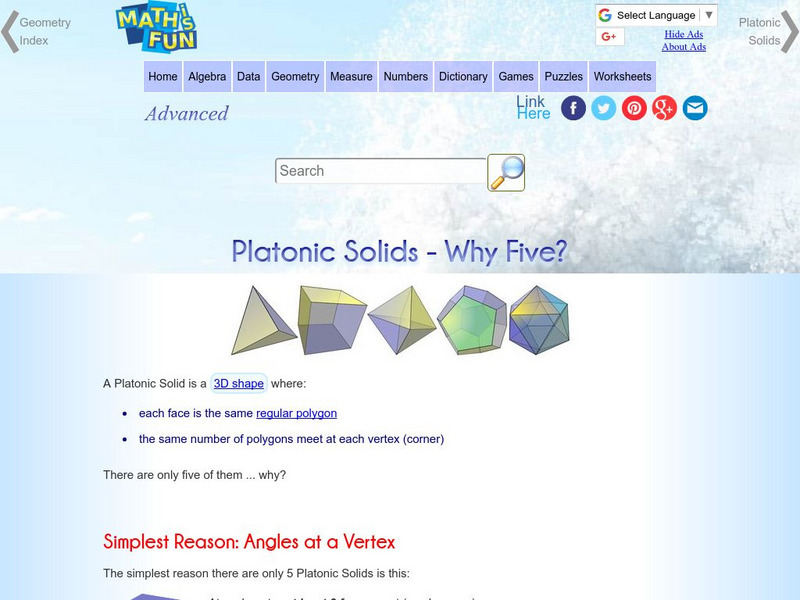Curated OER
Elements of Art
Students explore three topics of elements of art in this seven lessons unit. An overview of light, space, figure, ground, pattern, balance and symmetry are presented in this unit.
Wolfram Research
Wolfram Math World: Cube
Drawings and discussion on the properties of the cube, with lots of links to related pages. With this page you can find how to make a cube out of tetrahedron. [Requires Java.]
PBS
Pbs Learning Media: Making Rock Candy
In this video segment from Cyberchase, two friends make rock candy while learning about 2-D and 3-D shapes.
Beacon Learning Center
Beacon Learning Center: The Facts Please, Mr. Mumble
This interactive web lesson teaches students about two-dimensional shape attributes.
TeachEngineering
Teach Engineering: Boxed in and Wrapped Up
Learners find the volume and surface area of a rectangular box (e.g., a cereal box), and then figure out how to convert that box into a new, cubical box having the same volume as the original. As they construct the new, cube-shaped box...
Math Open Reference
Math Open Reference: Cube
Explore this 3D cube. Use the 'explode' slider to separate the faces.
University of Cambridge
University of Cambridge: Nrich: Up and Down Stairs
Work with this cube problem and see if you can find a pattern. Then you can check your solution with solutions already submitted.
National Council of Teachers of Mathematics
The Math Forum: Ask Dr. Math: Faq, Geometric Figures
This page brings you to a table of contents of three-dimensional figures. Selecting a figure will bring you to a page defining and illustrating the figure with applicable formulas listed.
Cool Math
Coolmath: Coolmath4kids: Polyhedra Gallery
A gallery of complex polyhedra with descriptions and characteristics.
Math Open Reference
Math Open Reference: Solid Geometry
A complete reference guide to solid geometry. The mathematics resource provides definitions and interactive activities that enhance further explanation.
Alabama Learning Exchange
Alex: Searching Solid Shapes
Lesson introducing the basic three-dimensional shapes (sphere, cylinder, cone, cube). Common items with those shapes are hidden on the playground for students to find and photograph. Pictures are then used to create a photostory....
Cuemath
Cuemath: Platonic Solids
Learn more about platonic sold geometry, understand the platonic solid names, view some solved examples, and try your hand at some interactive problems.
National Council of Teachers of Mathematics
The Math Forum: Studying Polyhedra
This site not only defines what a polyhedron is, but it allows you to view each of the five regular polyhedra through an interactive exercise. After selecting which polyhedron you'd like to see, it will tell you its name and how many...
University of South Florida
Fcat: Two for One Box Company: Teacher Notes
At this site young scholars use proportions to explore how volume is effected by dimension changes. This hands-on activity can be done individually or in pairs.
Wolfram Research
Wolfram Mathworld: Hexahedron
Learn about hexahedrons and hexahedral graphs from MathWorld.
University of Hawai'i
Density (Lesson Plan)
The purpose of this lesson plan is to find the density of regular (volume can be with a mathematical formula) or irregular objects through water displacement. Uses actual SI units (g/cubed cm).
Ministry of Education and Universities of the Region of Murcia (Spain)
Ministerio De Educacion Y Ciencia: Los Poliedros Regulars Y La Esfera
Interactive resources and activities dealing with properties and characteristic of the five polyhedrons and the sphere.
Oswego City School District
Regents Exam Prep Center: Platonic Solids
Did you know that the five regular platonic solids (tetrahedron, octahedron, icosahedron, cube, and dodecahedron) were thought to represent earth, air, fire, water, and the universe? This chart shows an image and provides a description...
AAA Math
Aaa Math: The Cube of a Number
Students review how to evaluate the cube of a number. Practice problems to check for comprehension of the math concept are included.
Texas Instruments
Texas Instruments: Explorer Draw App
Students use this App to draw two-dimensional shapes and representations of three-dimensional cubes. [Requires Adobe Reader.]
TeachEngineering
Teach Engineering: New Boxes From Old
Students find the volume and surface area of a rectangular box (e.g., a cereal box), and then figure out how to convert that box into a new, cubical box having the same volume as the original. As they construct the new, cube-shaped box...
TeachEngineering
Teach Engineering: The Boxes Go Mobile
To display the results from the previous activity, each student designs and constructs a mobile that contains a duplicate of his or her original box, the new cube-shaped box of the same volume, the scraps that are left over from the...
Math Is Fun
Math Is Fun: Platonic Solids: Why Five?
Use Euler's Formula and properties of known platonic solids' faces, edges, and vertices to determine why only five platonic solids exist.
Sophia Learning
Sophia: Finding Unknown Values of a Prism From Surface Area
This video lesson demonstrates how to work backwards to find a missing value when the surface area of a prism is known. The tutorial provides detailed examples. Students can check their understanding with an assessment.





